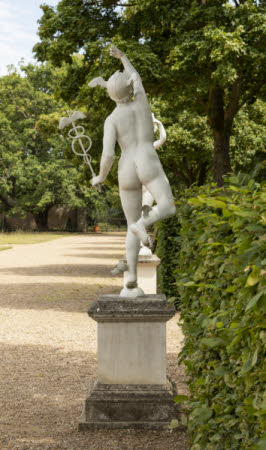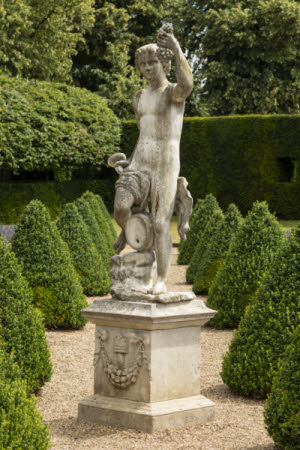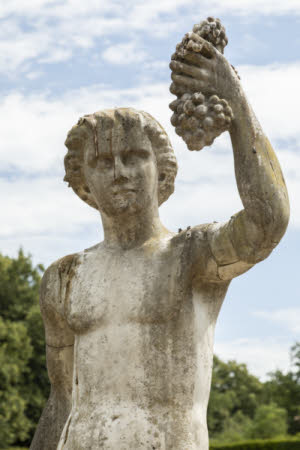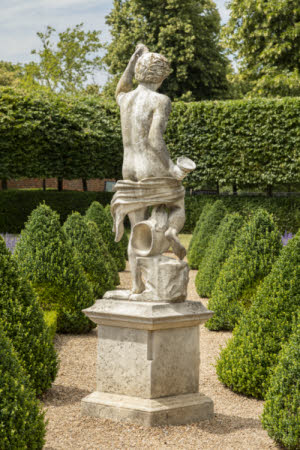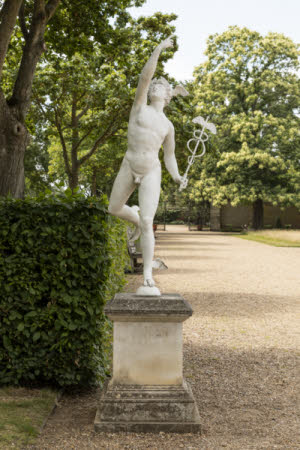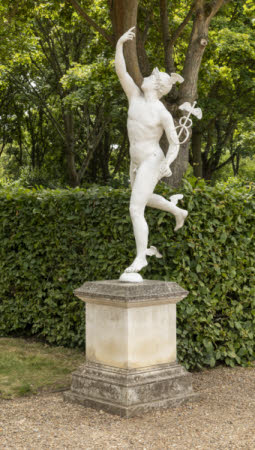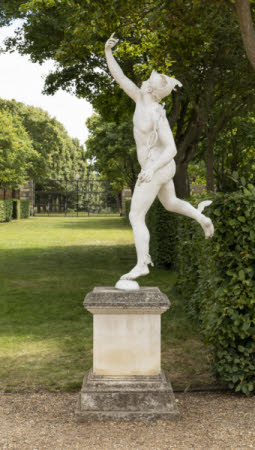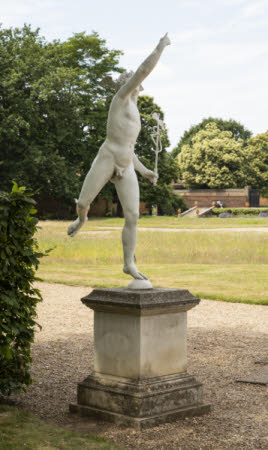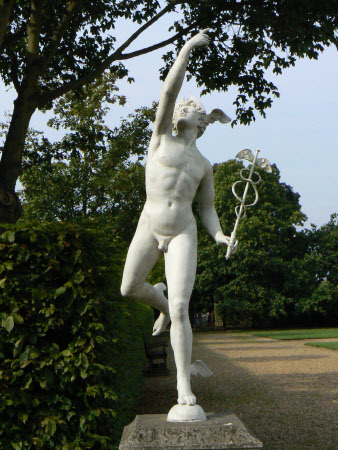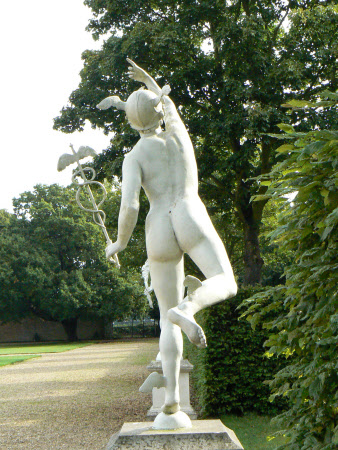Statue of Mercury, god of speed and of travellers
after Giambologna (Douai 1529 - Florence 1608)
Category
Art / Sculpture
Date
2003
Materials
Painted lead
Measurements
1800 mm (H); 860 mm (W); 920 mm (D)
Order this imageCollection
Ham House, Surrey
NT 1140392
Summary
A lead statue, painted white, depicting Mercury, the Roman god of travellers and speed. He is depicted naked and balancing upon a half-sphere, pointing upwards with his right hand and finger. The statue, loosely based on a model by Giambologna (1529-1608), is a modern copy by Rupert Harris that evokes a lead statue formerly in the gardens of Ham House.
Full description
A lead statue, painted white, depicting Mercury, the Roman god of travellers, speed and commerce. He is depicted naked except for his winged helmet (petasos) and standing with his left foot upon a half-sphere, his right leg angled backwards. His feet are equipped with small wings. He looks to his right and upwards, towards his right hand, one finger of which points heavenwards, whilst in his left hand is his wand or caduceus. Mounted upon a rectangular stone pedestal. One of two lead statues that were made in 2003 by Rupert Harris, to replace and evoke lost statues that are known to have been in the gardens at Ham House by the late 1670s. At this time the area of the gardens known as the Wilderness, to the south of the house, was embellished with a series of ten full-length lead statues of deities. A payment in 1672 recorded the installation of the sculptures, eight of which were ‘bronzed’ in 1673 and 1674, painted so that they appeared to be made of the more expensive metal bronze. Another two were painted white, to simulate marble, and perhaps also to create pleasing silhouettes against the brickwork of the house or the green hornbeam hedges of the Wilderness. The ten statues were recorded in the ‘Garden and Wildernesse’ of Ham House in the 1677 inventory as ‘Tenn statuas of lead whereof two upon stone pedestals, and Eight upon wooden pedestals.’ They may be seen in a painting attributed to Hendrick Danckerts and painted in the late 1670s, depicting the gardens to the south of the house (NT 1139878). It would seem likely that the lead statues at Ham were made, like almost all the sculpture at Ham, in the workshop of the Besnier family, of French origin. John Besnier received a commission for lead statuary, including four full-length figures, from the Duke of Ormonde in 1681. The ten statues had all disappeared from Ham by the twentieth century. Copies of the two white-painted lead statues were commissioned in 2003, the starting point the images in Danckerts’ painting. Both statues were loosely based upon models by Giambologna (1529-1608), the Mercury copied from a lead example at Rousham House in Oxfordshire. Giambologna’s figure of the winged god Mercury is perhaps his most celebrated model, made by the sculptor on various scales from lifesize to small bronze figurines, with some variations between the different models (for versions, see Charles Avery and Anthony Radcliffe, eds., Giambologna 1529-1608. Sculptor to the Medici, exh. cat., Edinburgh/London 1978, nos. 33-35). Giambologna's model of Fortuna, which is known only through small bronze versions, was conceived by the sculptor as a pair to the Mercury. Jeremy Warren January 2022
Provenance
Commissioned by the National Trust in 2003.
Makers and roles
after Giambologna (Douai 1529 - Florence 1608), sculptor after John Besnier (fl.1681), sculptor Rupert Harris Conservation Ltd, sculptor
References
Avery 2013: Charles Avery, ‘Seventeenth-century Sculpture at Ham House’ in Christopher Rowell, ed., Ham House. 400 Years of History, New Haven/London 2013, pp. 158-77., pp. 170-72.
